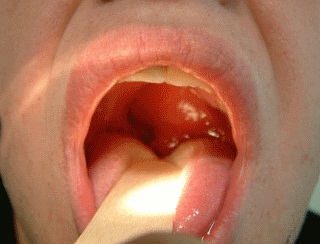What is Quinsy?
Quinsy is also known as a peritonsillar abscess, which is a collection of pus that forms between the tonsil and the wall of the throat. It is caused primarily by infection with streptococcus bacteria. Quinsy is often a complication of untreated tonsillitis and is a common and painful condition. However, with the use of antibiotics to treat tonsillitis, quinsy is now much less common.
Signs and Symptoms
There are a number of signs and symptoms that an individual commonly presents with, some of these include:
- A very painful sore throat, particularly confined to either the left or the right side
- Difficulty and pain when swallowing foods and drinks
- Difficulty breathing
- Bad breath
- Difficulty opening mouth
- Fever
- Fatigue and lethargy
- Ear pain
- Swelling around the neck and the face
- Problems with speech
Quinsy may be diagnosed based on history and an examination of the mouth and throat alone. Sometimes other tests and investigations may also be required, such as a CT scan.
Treatment
 The treatments for quinsy include antibiotic therapy, pain relief, drainage and surgery. The abscess needs to be drained to remove the pus, this can be done with a needle or by a doctor making an incision into the abscess and draining the pus this way.
The treatments for quinsy include antibiotic therapy, pain relief, drainage and surgery. The abscess needs to be drained to remove the pus, this can be done with a needle or by a doctor making an incision into the abscess and draining the pus this way.
Antibiotics are an important part of treatment and are needed to clear the infection. Penicillins can be used, as can other antibiotics, such as clindamycin and erythromycin. These are often given intravenously. Pain medications are also used to reduce the pain associated with quinsy and may make swallowing and talking more bearable.
Surgical removal of the tonsils is usually recommended, especially if the patient has had more than one bout of quinsy. However, the timing of the tonsillectomy procedure is debated. Traditionally, tonsillectomy was not performed in the same hospital admission following drainage of the quinsy. With recommendations that the tonsillectomy be carried out later on, around 3-6 months following the drainage to allow for healing of the area (1).
However, recent literature suggests that immediate tonsillectomy is safe and effective for treating quinsy alongside antibiotic treatment, and can reduce the in hospital stay (2). The decision regarding the timing of the tonsillectomy will depend on the preferences of yourself and the surgeon.
If you have any problems with quinsy throat infection, contact your local doctor, who will arrange for you to see an ear nose and throat specialist.
For more information click here.
References
(1) Peritonsillar abscess: Diagnosis and Treatment
(2) Immediate tonsillectomy for peritonsillary abscess (quinsy)




